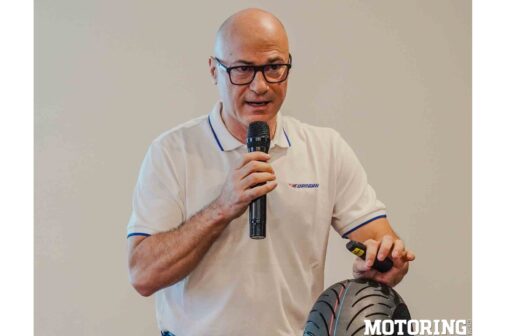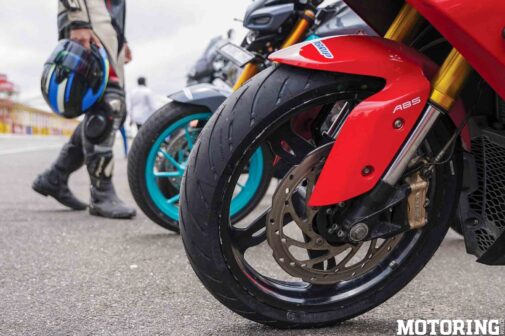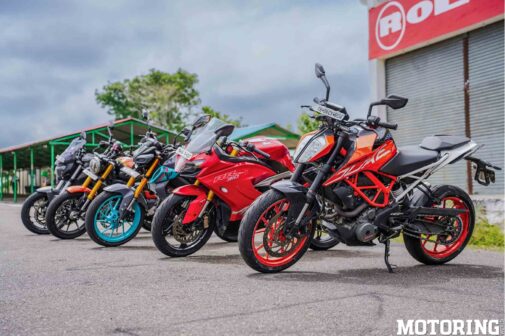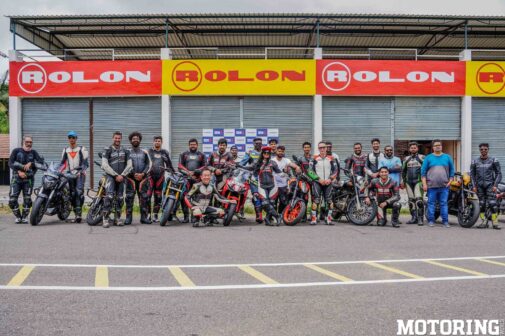It’s always a fun experience whenever Eurogrip Tyres hosts us for Tread Talks every six months. What started out as something of a round table on tyre technology and manufacturing has slowly blossomed into an event where we not only get to experience the tyres but, in fine detail, the processes that go into the making of the one thing that keeps us in contact with the tarmac. This time around, though, they shook things up a bit and decided to conduct a masterclass consisting of theory and practical sessions where we could hone our skills in evaluating tyres from highly experienced professionals in the field.
Our classroom for this session was the Kari Motor Speedway in Coimbatore, a track that I have always found particularly exciting, mostly because of how precise the limits of tolerance are for mistakes on this circuit. But first, we had to endure the theory class, led by four tyre experts from Eurogrip. The first two are international veteran riders, Toshihiro Wakayama from Japan and Vittorio Iannuzzo from Italy, both very accomplished riders and now testers for Eurogrip. We also had Renato Zilli, Eurogrip Milan, and V Sivaramakrishnan, CTO, Eurogrip tyres. The session started off with a detailed session on the rubber compounds they use, what tread patterns, steel or nylon belted, and so on, and what goes on behind the scenes of making the tyres, while the two riders later went on to explain the process of evaluating and testing tyres before they are launched to the public.
As the actual classroom session came to a close, I couldn’t wait to slip into my leathers and head out onto the track. But we weren’t there just for any regular track day. We were there to learn the tips and tricks of the trade in terms of testing the limits of motorcycle tyres and how to evaluate tyre performance. We were to do this by observing the experts and emulating their actions, with, of course, a better understanding of why we were doing so. We were split into batches and sent forth to choose our rides from the lineup in front of us. The said lineup had a range of motorcycles fitted with Beamer+, Protorq Extreme, and Roadhound tread patterns.
We started with a few slalom drills with the different tyres to be able to make out the difference in the levels of manoeuvrability, stability and overall capability. Post that we were sent out on track to make sense of the lightness, precision, lean capability, braking ability and overall feel of the tyres. By the end of the session, I realised that I could not push the MT-15 the same way as I was pushing the Duke 390, because the Beamer+ front was no match for the Protorq Extreme on both ends of the Duke. Similarly, the Street Rod 750 with Roadhound tyres leaned into corners with a marginally higher level of confidence than the Duke, while also being able to brake later, but with more efficiency. It’s these subtle differences that feel more profound when you learn to identify them correctly, which was the point of the whole exercise.
Now, the proper testing protocol that the experts follow is much more complicated and detailed, involving laboriously scrutinised tests in various conditions, with many different manufacturers’ tyres as benchmarks. The riders test the levels of grip, braking capability, manoeuvrability, and many other distinct factors that would collectively decide how good the tyre is. Since we were running on a tight schedule, we had to make full use of what little time we had available to us. What I did manage to do with that was to stay as close to the instructors as possible and follow their actions while simultaneously trying to figure out what sort of response I was getting from the tyres.
The session ended on a very insightful note, resulting in us leaving with a little more than we had arrived with. I look forward to more detailed and lengthier sessions in the future, so as to be able to make full use of the expert guidance that was made available to us. Until next time, we stay rubber side up, always.




















